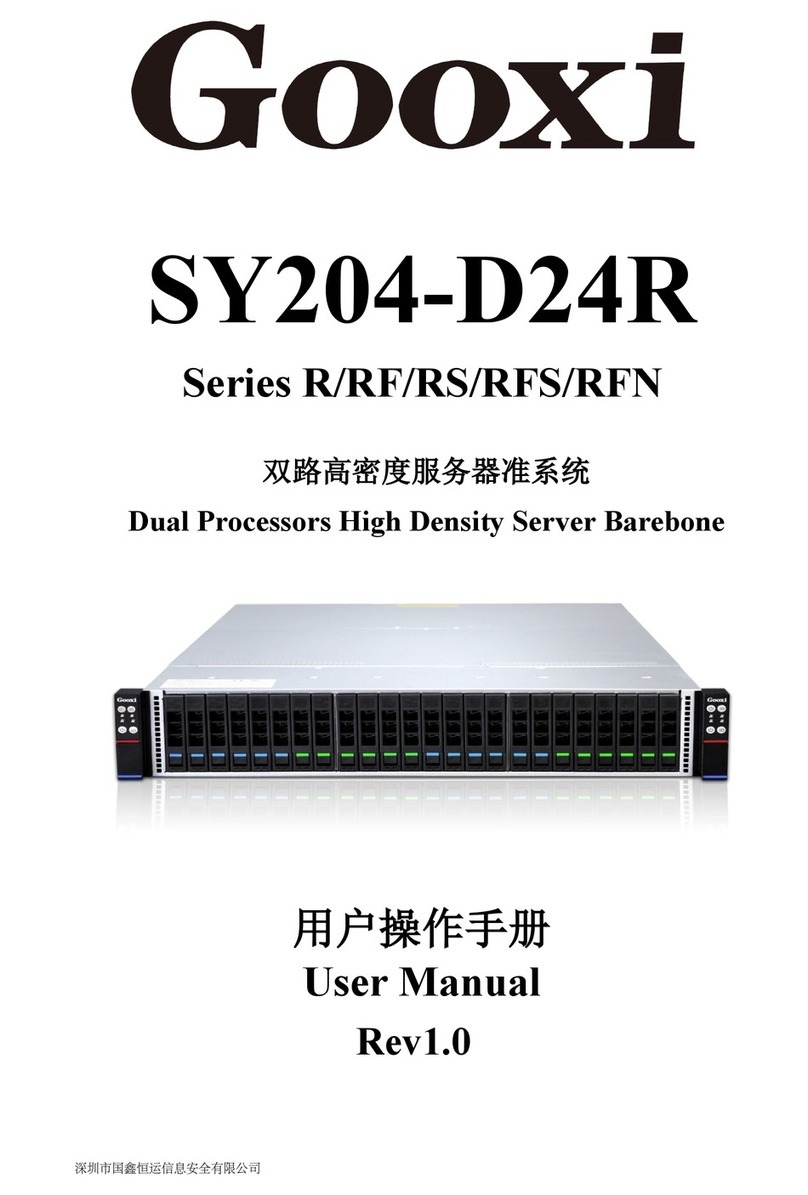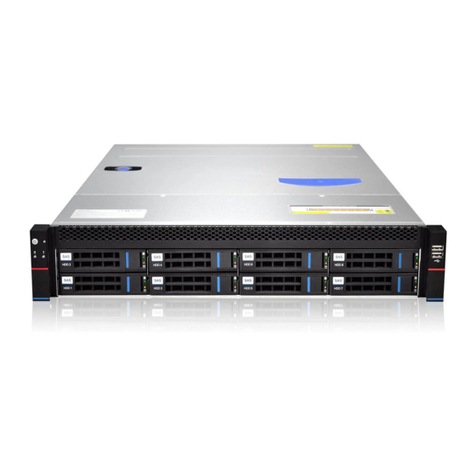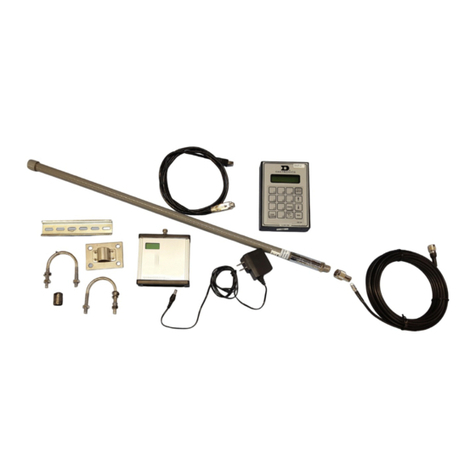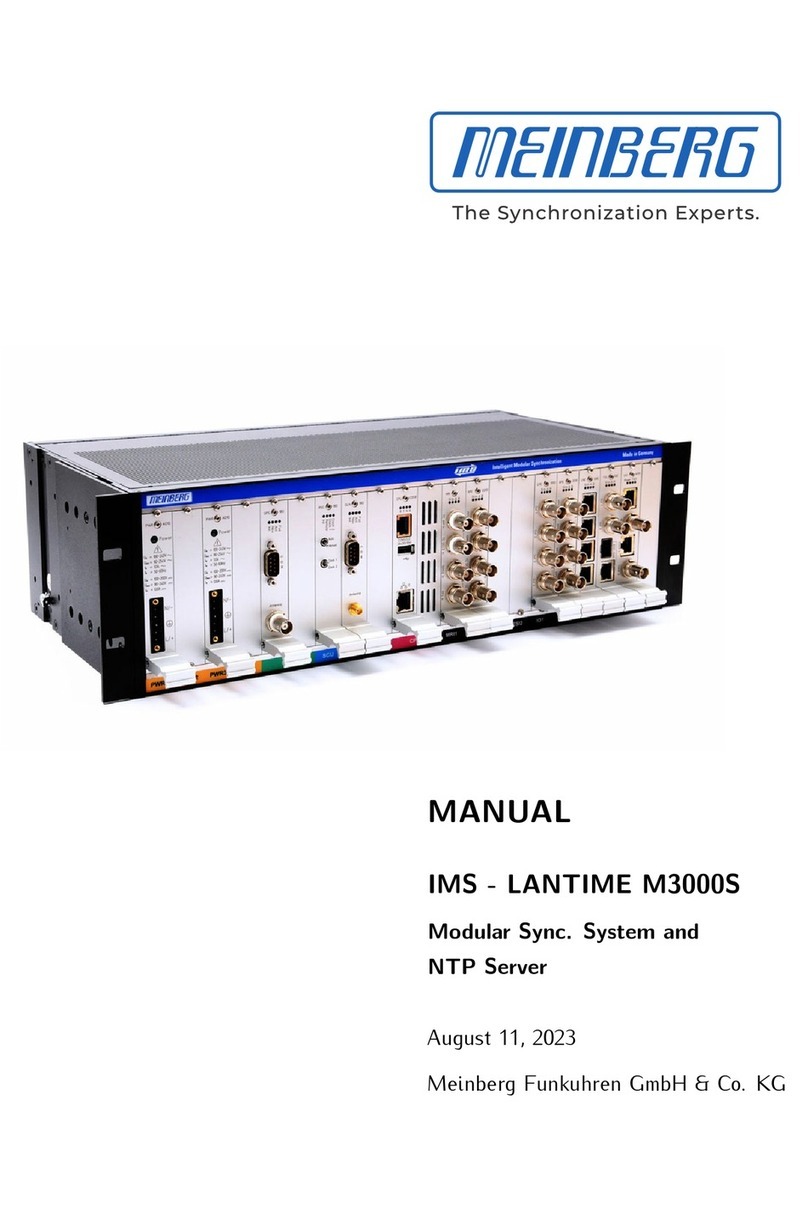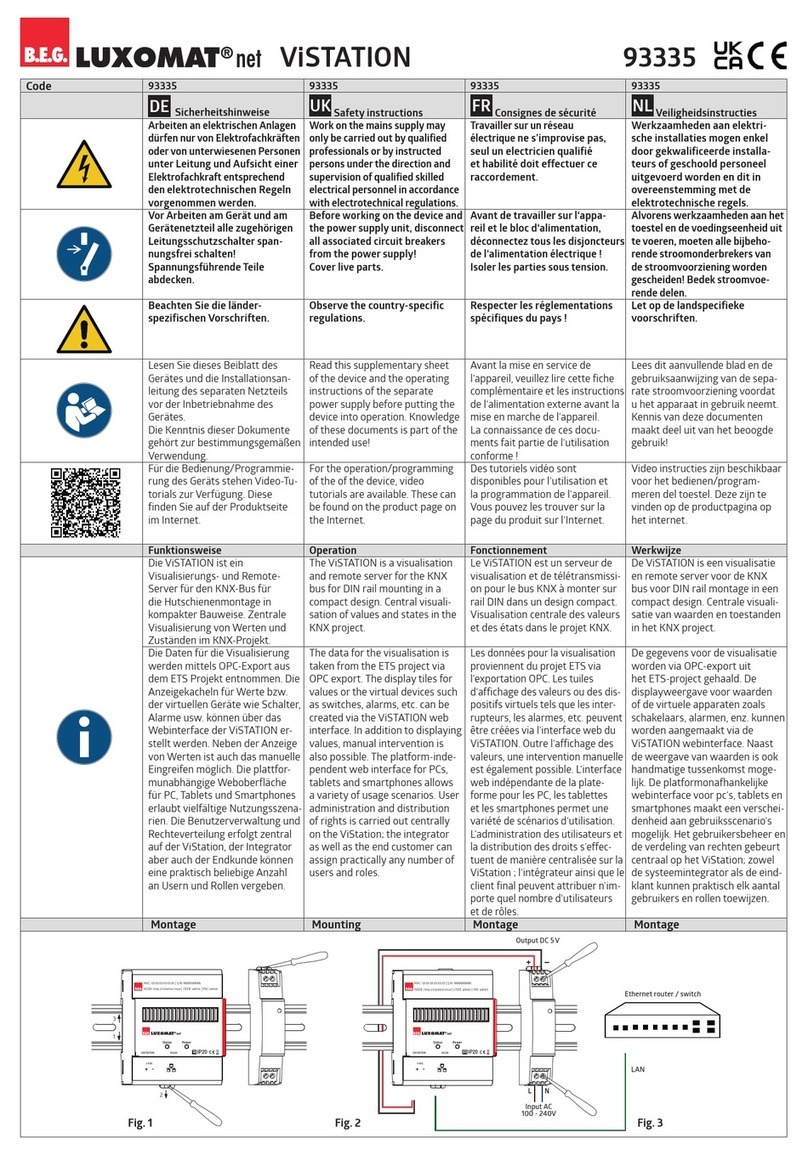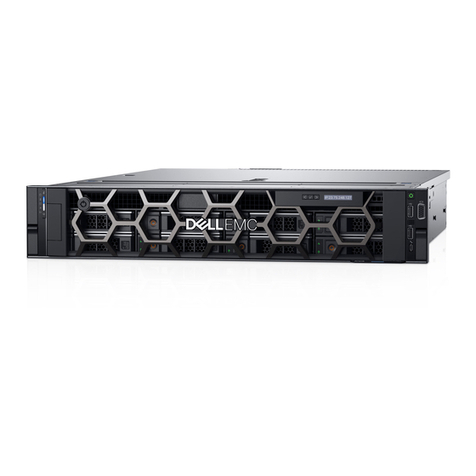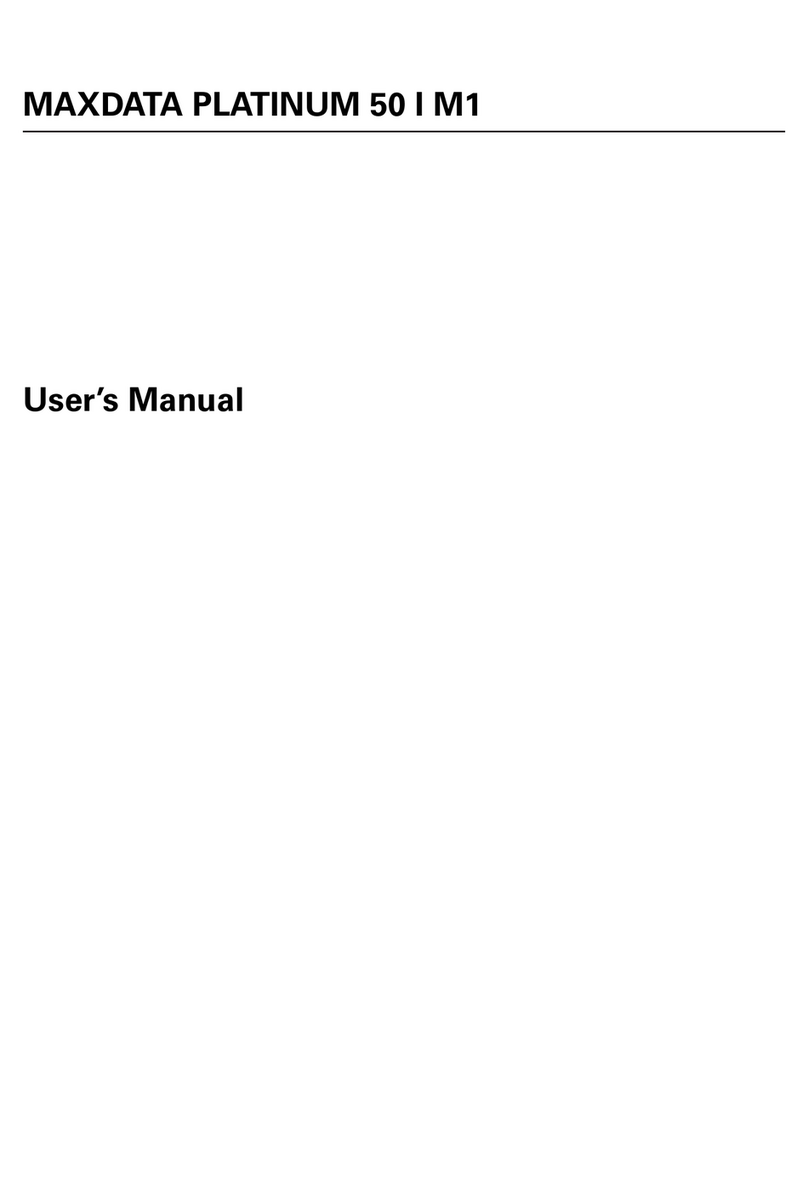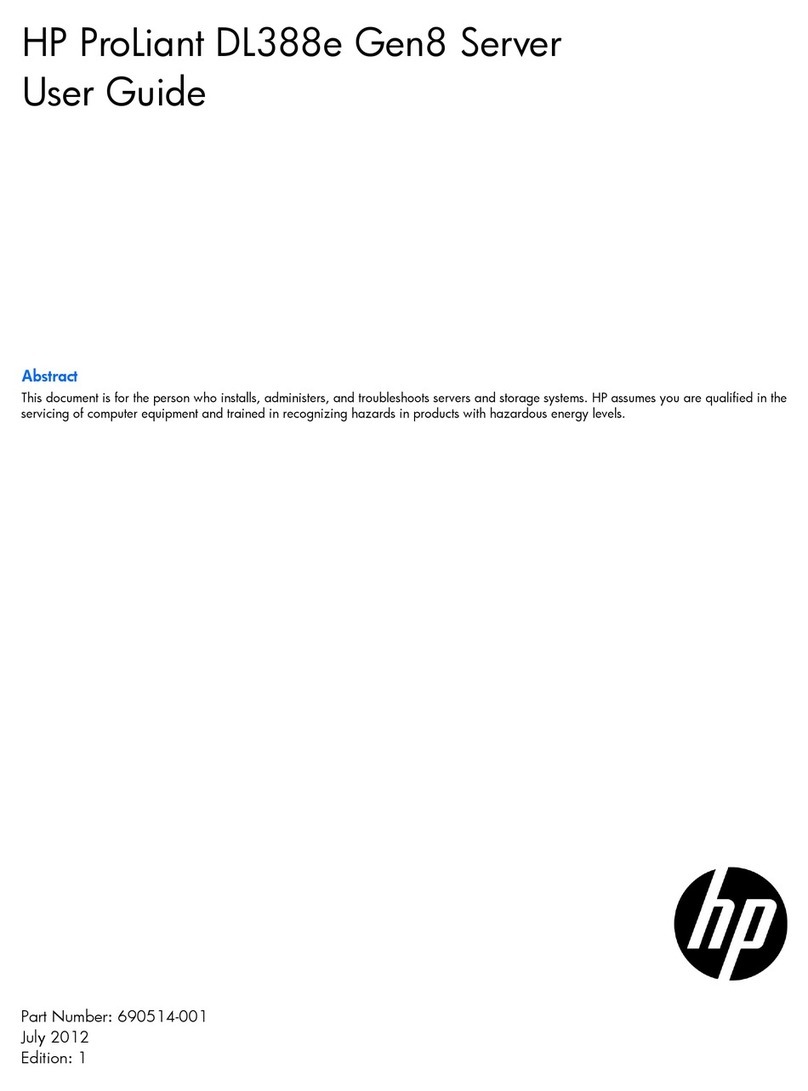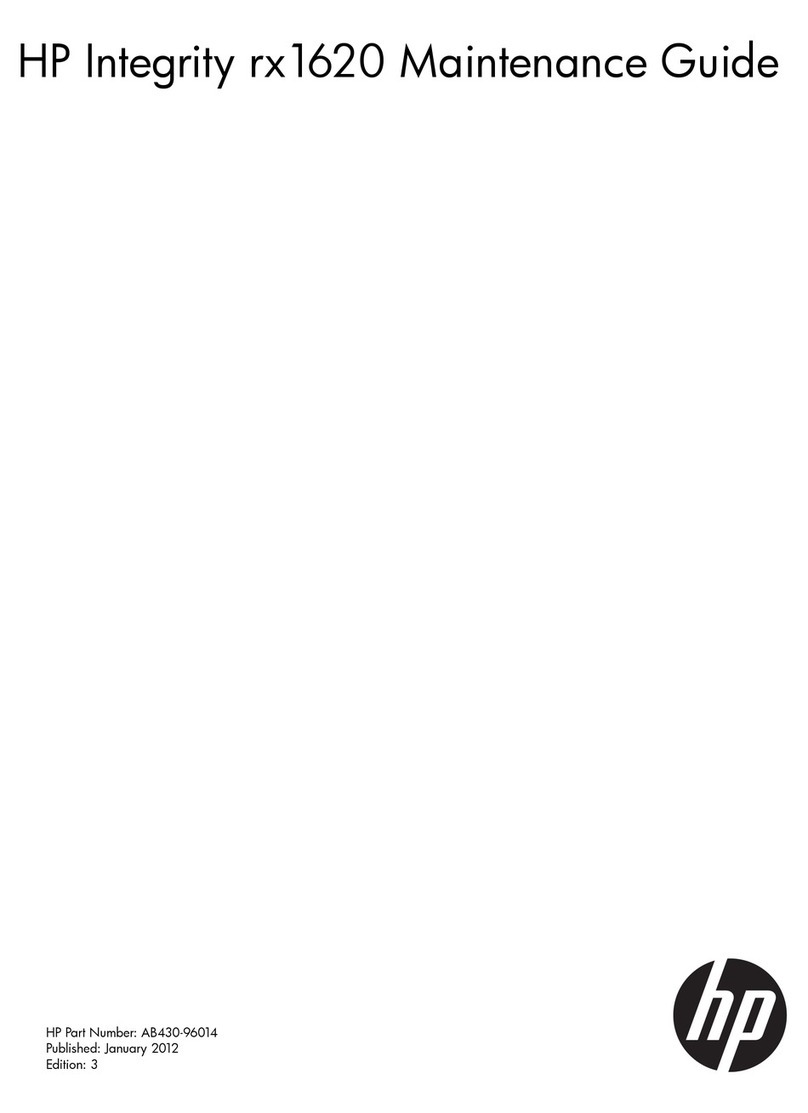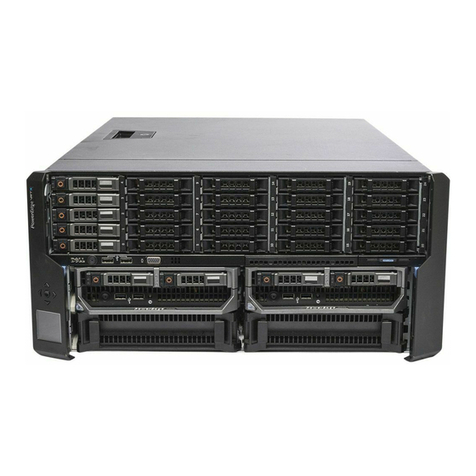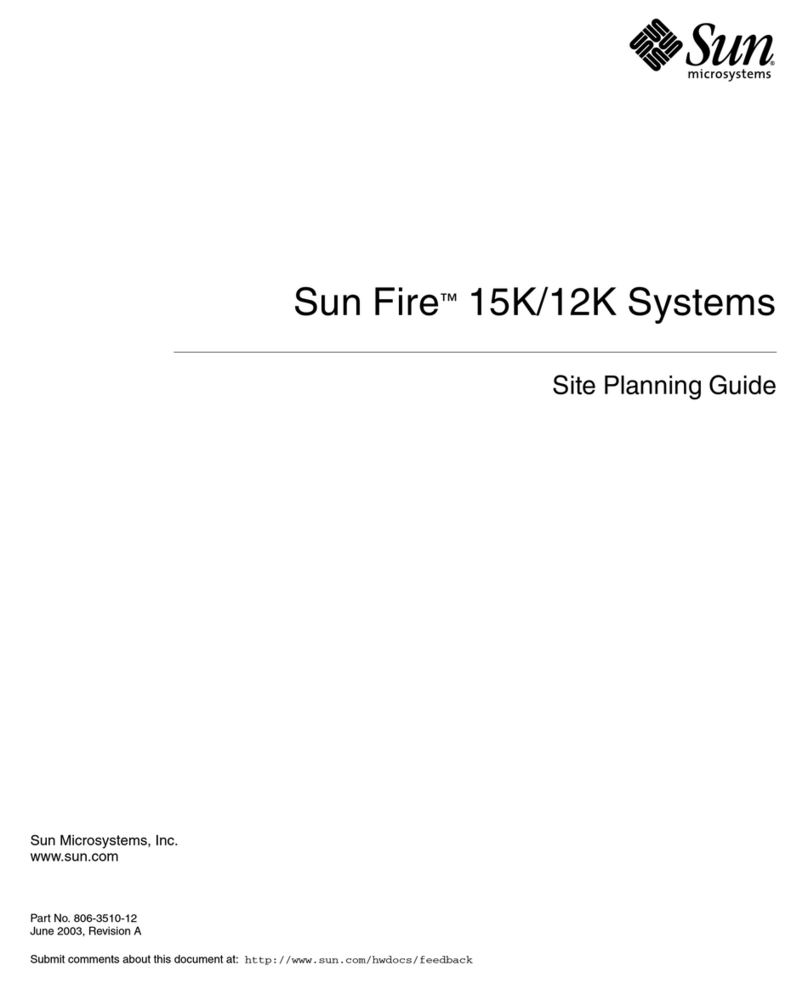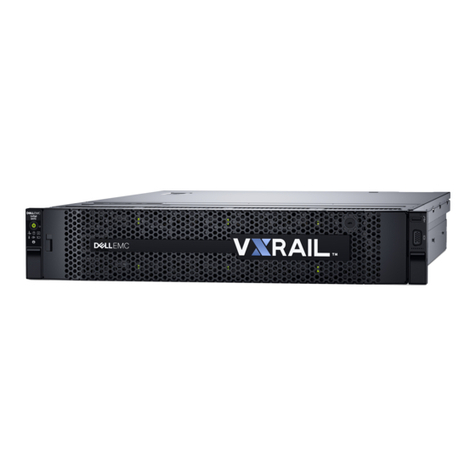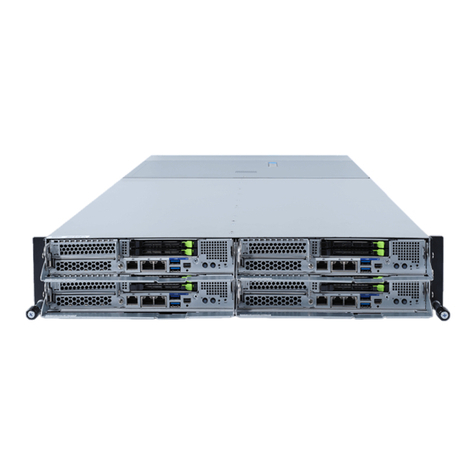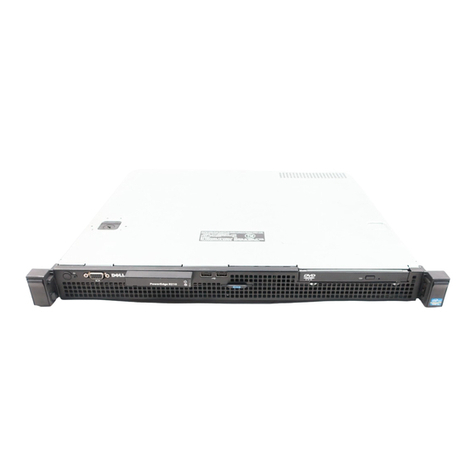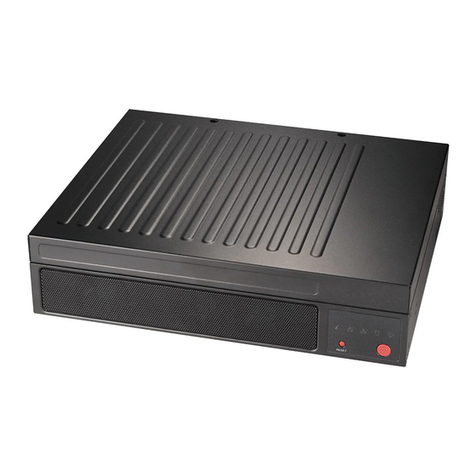Gooxi SR401 4U User manual

SR401 4U
Rack Server User Manual
Document Version: 02
Release Date: 16/Nov/2022
Shenzhen Gooxi Information Security Co., Ltd.

Statement
Copyright Statement
©Shenzhen Gooxi Information Security Co., Ltd. All rights reserved.
This user manual, including but not limited to all information contained in it,
is protected by copyright law. Without the permission of Shenzhen Gooxi
Information Security Co., Ltd. (hereinafter referred to as "Gooxi"), no imitation,
copying, excerpt, forwarding and other acts or for other purposes.
Disclaimer
Gooxi provides this user manual on an "status quo" basis, and within the
scope of the law, does not provide any express or implied guarantees and
guarantees, including but not limited to commercial sales, suitability for specific
purposes, non-infringement of any rights of others and any guarantee of the use
of this user manual or the inability to use this user manual, and Gooxi does not
provide guarantees for the results obtained from the use of this manual or the
accuracy or reliability of any information obtained through this manual.
Due to the version upgrades or other reasons, the content of this manual
maybe be updated from time to time. Unless otherwise agreed, this manual is
only used as a guide, and the user shall bear all risks of using this user manual.
Trademark Statement
Gooxi®is a trademark of Shenzhen Gooxi Information Security Co., Ltd.
Microsoft®and Windows are trademarks of the Microsoft group of
companies.
Linux®is a registered trademark of Linus Torvalds.
Aspeed®is a trademark of Aspeed Technology Inc.
Other trademarks are the property of their respective owners.

Foreword
This manual is the product technical manual of Gooxi SR401 4U
rackmount server, which mainly describes the appearance, structure, hardware
installation and basic configuration of this product.
This manual is for reference and research by professional technicians. This
product should only be installed and maintained by experienced technicians.
Convention:
Note: it is used to transmit equipment or environmental safety warning
messages, if not avoided, it may lead to equipment damage, data loss,
equipment performance degradation or other unpredictable results.
Warning: indicates a potentially hazardous situation which, if not
avoided, it may result in death or serious personal injury.
Red arrow: means pointing to a certain location.
Blue arrows: means the action of pulling out or inserting at an angle.
Dark blue rotation arrow 1: represents the action of turning the screw
clockwise or pulling it outward.
Dark blue rotating arrow 2: represents the action of turning the screw
counterclockwise or buckling inward.
Hollow arrow: represents the next action or result.

Modification record
Manual version
Release date
Remarks
01
2022/October/16
Initial release
02
2022/November/16
Optimized description

Contents
1 Product Description ...............................................................................................................................................6
1.1 Product overview ........................................................................................................................................... 6
1.2 Product structure ............................................................................................................................................ 7
1.3 Logical structure ............................................................................................................................................ 8
1.4 Product parameters .........................................................................................................................................9
2 Hardware Description ......................................................................................................................................... 10
2.1 Front panel ................................................................................................................................................... 10
2.1.1 Appearance ................................................................................................................................................10
2.1.2 LED and button .........................................................................................................................................11
2.1.3 Interface .................................................................................................................................................... 13
2.2 Rear panel .................................................................................................................................................... 13
2.2.1 Appearance ................................................................................................................................................13
2.2.2 LED and button .........................................................................................................................................14
2.2.3 Interface .................................................................................................................................................... 15
2.3 Processor ...................................................................................................................................................... 16
2.4 Memory ........................................................................................................................................................17
2.4.1 Memory slot location ................................................................................................................................ 17
2.4.2 Memory compatibility information ...........................................................................................................17
2.5 Storage ......................................................................................................................................................... 18
2.5.1 Hard disk configuration ............................................................................................................................ 18
2.5.2 Hard disk serial number ............................................................................................................................ 19
2.5.3 Hard disk status LED ................................................................................................................................ 20
2.6 Power supply ................................................................................................................................................20
2.7 Fan ................................................................................................................................................................21
2.8 I/O expansion ............................................................................................................................................... 22
2.8.1 PCIe slot distribution ................................................................................................................................ 22
2.8.2 PCIe slot description ................................................................................................................................. 23
2.8.3 PCIe expansion module ............................................................................................................................ 24
2.9 PCBA ........................................................................................................................................................... 26
2.9.1 Motherboard ..............................................................................................................................................26
2.9.2 Hard disk backplane ..................................................................................................................................28
3 Installation Notes ................................................................................................................................................ 32
3.1 Chassis upper cover installation...................................................................................................................32
3.2 Mounting accessories ................................................................................................................................... 33
3.2.1 Install the CPU .......................................................................................................................................... 33
3.2.2 Install heat-sink ......................................................................................................................................... 35
3.2.3 Install memory .......................................................................................................................................... 36
3.2.4 Install the server rails ................................................................................................................................ 36
4 Configuration Instructions .................................................................................................................................. 40
4.1 Initial configuration ......................................................................................................................................40
4.1.1 Power on ................................................................................................................................................... 40
4.1.2 Initial data ................................................................................................................................................. 42
4.1.3 Configure BIOS ........................................................................................................................................ 42
4.1.4 Configure BMC ........................................................................................................................................ 43
5 Appendix ............................................................................................................................................................. 47

6
1Product Description
1.1 Product overview
The SR401 4U rackmount server is a new generation of 2U dual-socket rack server with
a wide range of uses launched by Gooxi for the needs of the Internet, IDC (Internet Data
Center), cloud computing, enterprise market, and telecom business applications. It is suitable
for IT core business, cloud computing virtualization, high-performance computing,
distributed storage, big data processing, enterprise and telecom business applications and
other complex workloads. The server has the advantages of low energy consumption, strong
scalability, high reliability, easy management, easy deployment, etc.
The main configurations are:
·Supports 2 AMD EPYC™ 7003/7002/7001 processors.
·Up to 36* 3.5-inch hard drives
·The rear window supports expansion of 4*3.5-inch hard disks and 4*2.5-inch hard disks
·Up to 11 PCIE expansion slots, which can be used to expand GPU cards, network cards, etc.
Front view (Figure 1-1)
24-bay rear view (Figure 1-2)

7
36-bay rear view (Figure 1-3)
1.2 Product structure
The physical structure of the SR401 4U rack-mounted server is different due to different
requirements, and the configuration will be different. Taking the 36-model as an example,
the components of the server shown in the figure below:
Structure diagram (1-4)
S/N
Name
S/N
Name
1
Wind shield
9
Full height PCIE module
2
RAM
10
Half height PCIE module
3
Motherboard (G1DLRO-B)
11
1+1 redundant power supply
4
OCP 3.0 network card
(optional)
12
Rear 2.5 inch hard disk module
5
CPU heat sink
13
24 Hard disk box assembly

8
Table (1-1)
1.3 Logical structure
The logic of SR401 4U rack server is shown in the figure below:
Motherboard logic block diagram (1-5)
·2 SP3 Sockets, supporting two AMD EPYC™ 7002 series processors;
·Single CPU supports 8 DDR4 channels, each channel supports 2 DIMMs, and the two CPUs
support 32DIMM DDR4 memory;
·DDR4 type: DDR4 2400/2666/2933/3200MHz ECC-RDIMM/LRDIMM;
·There are 3 groups of PCIe RISER slots on the board, among which: 32 PCIE LANEs of
RISER1 come from CPU0, 32 PCIE LANEs of RISER2 come from CPU1, 16 PCIE LANEs of
RISER3 come from CPU1;
·G1DLRO-B motherboard provides 2 M.2 M Key SSD slots, only supports 2280 size, PCIe4.0
X2 signal;
·2 Gigabit Ethernet ports are integrated on the motherboard, using I350-AM2 chip;
·The BMC chip in this board adopts ASPEED company's AST2500 control chip, which is used
6
cooling fan
14
Chassis upper cover
7
Gooxi 4U 798mm chassis
15
24-bay expansion backplane
8
Fan bracket
16
12 Hard disk box assembly

9
for IPMI remote management, VGA output port, and dedicated Gigabit RJ45 management
network port.
1.4 Product parameters
System
System model
SR401-D24RE
SR401-D36RE
Chassis
Gooxi 4U rackmount chassis
Motherboard
G1DLRO-B
CPU
Supports 2 AMD EPYC™ 7003/7002/7001 processors
Memory
Type supports DDR4 RDIMM/LRDIMM;
Frequency supports 2400/2666/2933/3200MHz;
Support single capacity of 8G/16GB/32GB/64GB/128GB/256GB, and the
maximum memory capacity of the whole machine is 8TB.
Hard drive
Front 24* 3.5/2.5 inch hot-swap hard drives
4U24 rear supports four 3.5 inch
and four 2.5 inch hot-swap hard
drives
4U36 rear upper layer supports 4*
3.5 inch and 4* 2.5 inch hot-swap
hard drives; the lower layer
supports 12* 3.5/2.5 inch hot-swap
hard disks
Internet function
2 RJ45 Gigabit Ethernet ports
Management
interface
1 RJ45 IPMI management network port
Display function
Onboard Aspeed®AST2500 chip, support VGA output
M.2
Support 2 M.2 ports (M key, only support 2280 size specifications)
USB
Front 2 USB3.0 ports, built-in 1 USB3.0, rear USB3.0 port
Expansion slot
Up to 11 PCIe expansion slots
Power
System supports 550W, 800W, 1200W, 1300W, 1600W hot-swap
redundant power supply
Fan
Support 8* 8038 temperature-controlled fans (optional 8056
temperature-controlled fans)
Size
798mm*444mm*176.5mm (length*width*height)
Operating system support
OS
CentOS 7.6/ CentOS 8.0
SLES11 SP4
Ubuntu 17.04/Ubuntu 18.04/ Ubuntu 20.04
Windows server 2016/Windows server 2019
VMware ESXi vSphere6/VMware ESXi vSphere7
System environment parameters
Operating
temperature and
humidity
Temperature 5℃ ~ 40℃; Humidity: 35% ~ 80% non-condensing
Storage
temperature and
humidity
Short time (≤72 H): temperature -40℃~70℃/ Humidity 20%~90%
non-condensing (including packaging)
Long time (>72 H): temperature 20℃~28℃/ Humidity 30%~70%
non-condensing (including packaging)
Certification
Certification
CE, CCC, ROHS
Table (1-2)

10
2Hardware Description
2.1 Front panel
2. 1.1 Appearance
24x3.5 inch hard drive configuration
S/N
Name
S/N
Name
1
Left ear assembly
2
24* 3.5 inch hard disk boxes
3
Right ear assembly
36x3.5 inch hard drive configuration

11
S/N
Name
S/N
Name
1
Left ear assembly
2
Right ear assembly
3
Front 24* 3.5 inch hard
disk boxes
4
Rear 12* 3.5 inch hard disk
boxes
2. 1.2 LED and button
S/N
LED/button
S/N
LED/button
1
Power switch button/LED
5
System alarm LED
2
UID button/LED
6
Network port 1 connection
status LED
Front
view
Rear
view

12
3
Reset server button
7
Network port 2 connection
status LED
4
HDD LED
LED status description
Logo
LED/button
Status description
Power LED
Description of the power LED:
Green on: Indicates that the device has been
powered on normally.
Green flashing: Indicates that the device is in
standby.
Green off: Indicates that the device is not
powered on.
Power button description:
Press the button shortly in the power-on
state, and the OS will shut down normally.
Press and hold the button for 6 seconds in the
power-on state to force the server to power
off.
Press the button shortly in the power-on state
to start the machine.
UID
button/LED
The UID button/LED is used to conveniently
locate the server to be operated, and the LED
can be turned off or on by manually pressing
the UID button or remotely controlling the
BMC command.
Description of UID LED:
Blue (on/flashing): Indicates that the server
is located.
Off: Indicates that the server is not located.
UID button description: Short press this
button to turn on/off the positioning light.
Reset restart
server button
Press to restart the server
HDD LED
Green flashing: The hard disk is operating
normally
System
Alarm LED
System warning LED. Including system
alarms, fan alarms, power supply alarms,
etc., which can be viewed through the IPMI
management software
Network port
connection
status LED
Corresponds to the Ethernet port LED of the
network card.
Green on: Indicates that the network port is
connected normally.
Off: Indicates that the network port is not in
use or faulty.
Note: Corresponds to two 1GE network ports
on the motherboard.
Network port
connection
status LED
Corresponds to the Ethernet port LED of the
network card.
Green on: Indicates that the network port is

13
connected normally.
Off: Indicates that the network port is not in
use or faulty.
Note: Corresponds to two 1GE network ports
on the motherboard.
2. 1.3 Interface
Interface location
S/N
Name
S/N
Name
1
USB 3.0 interface
2
For accessing USB device
2.2 Rear panel
2. 2.1 Appearance
Appearance of the rear panel

14
S/N
Name
S/N
Name
1
Riser 1 module
2
Riser 2 module
3
Riser 3 module
4
Riser 4 module
5
I/O port
6
OCP 3.0 network card
(optional)
7
PSU1
8
PSU2
Description:
1. Riser1 module, Riser2 module, Riser3 module, Riser4 module can choose
rear hard disk module or PCIe Riser module.
2. This picture is for reference only, the actual configuration shall prevail.
2. 2.2 LED and button
Rear panel LED
S/N
Name
S/N
Name
1
Connection status LED
5
UID LED
2
Data transmission status LED
6
OCP network port LED
3
Connection status LED
7
Power module LED
4
Data transmission status LED
8
Power module LED
Description of power module LED
LED/button
Status description
Power module
LED
Green (on): Indicates that the input and output are normal.
Yellow (on): Indicates that the AC power cord is unplugged or the
power module is lost, and only one parallel-connected power
module has AC input. The power module failure causes the output
to be turned off, such as OVP, OCP, fan failure, etc.
Green (1Hz/flashing): Indicates that the input is normal, and the
output is turned off due to power-on or in-position; the input is
over-voltage or under-voltage.
Green (2Hz/flashing): Indicates that the Firmware is being
upgraded online.
Yellow (1Hz/flashing): Indicates power supply warning events that
the power supply continues to run; power supply over-temperature
protection, power supply output overcurrent/overvoltage, and fan
speed is slow.

15
Off: Indicates no AC power input.
Connection status
LED
Green on: Indicates 1000M Link.
Orange on: Indicates a 100M link.
Off: 10M Link.
Data transmission
status LED
Yellow (flashing): Indicates data is being transmitted.
Off: Indicates no data transmission.
UID LED
The blue LED is on when it is on. You can use the IPMI page
Or the UID button control on the server
OCP network port
LED
The upper two are connection status LEDs, and the lower two are data
transmission status LEDs
2. 2.3 Interface
Rear panel interface
Figure (2-8)
S/N
Name
S/N
Name
1
Management network port
2
VGA interface
3
Gigabit Ethernet port
4
COM interface
5
USB 3.0 interface
6
OCP3.0 interface
7
Power module interface 1
8
Power module interface 2
Interface Description
Name
Type
No.
Description
VGA interface
DB15
1
Used to connect a display terminal, such as a monitor
or KVM .
Management
network port
GE BASE-T
1
Provide outgoing 1000Mbit/s Ethernet port. The
server can be managed through this interface.
USB interface
USB 3.0
2
Provide an external USB interface through which
USB devices can be connected.
Notice:

16
When using an external USB device, please make sure
that the USB device is in good condition, otherwise
the server may work abnormally.
RJ45 Gigabit
Ethernet port
GE BASE-T
2
Server network port.
AC interface
of the power
module
/
1 or 2
You can choose the number of power supplies
according to your actual needs, but make sure that the
rated power of the power supply is greater than the
rated power of the whole machine.
COM port
1
Serial communication port
OCP3.0
interface
1
Install OCP3.0 network card
2.3 Processor
Supports 2 AMD EPYC™ 7003/7002/7001 processors.
When configuring 1 processor, it needs to be installed in the CPU 0 position.
Processors configured on the same server must have the same model.
For specific optional purchasing system options, please consult Gooxi sales rep.
The location of the processor is shown in the figure below:

17
2.4 Memory
2. 4.1 Memory slot location
The motherboard supports 16 DDR4 channels, each channel supports 2 DIMMs, and 2
CPUs support 32 DDR4 slots in total (when only one memory is inserted, insert the blue slot
on the motherboard first).
2. 4.2 Memory compatibility information
The motherboard supports DDR4 RDIMM/LRDIMM server memory, and the memory
frequency supports 2400/2666/2933/3200;
Notice:
The same server must use the same type of DDR4 memory, and all memory must
run at the same speed, and the speed value is the lowest value of the following
items:
Memory speed supported by a particular CPU.
Maximum operating speed for a specific memory configuration.
Different types (RDIMM, LRDIMM) and specifications (capacity, bit width, rank,
height, etc.) do not support mixed use.
The maximum memory capacity supported by different models of AMD EPYC
CPUs is different. (See attachment-AMD CPU memory installation guide for
details)

18
Note:
1: M1 can be inserted in any slot, C or D is recommended.
2: M1, M2 can be inserted in any slot, C or G is recommended.
3: M1 can be in any slot, M2 can be inserted in any other slot.
4: M1 ≠ M2; M2 ≠ M3; M3 ≠ M4.
2.5 Storage
2. 5.1 Hard disk configuration
Configuration
Max no. of front hard
*Max no. of rear hard disks (piece)
Description

19
disks (piece)
24x3.5 inch
hard drives
Front hard drive
(24x3.5 or 2.5) :
0-23 slots
support
SAS/SATA hard
drive
Riser 1/ Riser 2 : Support
expansion of 4* 3.5 inch SAS/
SATA hard drives
Riser 3/ Riser 4: Support
expansion of 4* 2.5 inch SAS/
SATA / U.2 hard drive
SAS hard drives need to
be supported by
optional SAS
pass-through card or
RAID card.
36x3.5 inch
hard drives
Front hard disk
(36x3.5 or 2.5) :
0-35 slots
support
SAS/SATA hard
drive
Riser 1/ Riser 2 : Support
expansion of 4* 3.5 inch SAS/
SATA hard drives
Riser 3/ Riser 4: Support
expansion of 4* 2.5 inch SAS/
SATA / U.2 hard drive
Note: *The maximum number of rear hard drives is affected by the type of NVMe /SAS/SATA
hard drives.
2. 5.2 Hard disk serial number
24x3.5 inch hard drive configuration
36x3.5 inch hard drive configuration
Front 24-bay view

20
Rear 12-bay view
2. 5.3 Hard disk status LED
Hard Disk Status LED Description
Function
Act LED
Fault LED
Status LED
Hard disk in
place
On
Off
Off
Hard disk
activity
On
Off
Off
Hard disk
positioning
On
Flashing
4Hz/sec
Off
Hard disk
error
On
Off
On
RAID
rebuild
On
Off
Flashing
1Hz/second
2.6 Power supply
Support 1 or 2 power modules;
Supports AC or DC power modules;
Support hot swap;
When configuring 2 power modules, it supports 1+1 redundant backup;
For power modules configured on the same server, the power module models
must be the same;
For specific optional purchasing system options, please consult Gooxi sales
Table of contents
Other Gooxi Server manuals
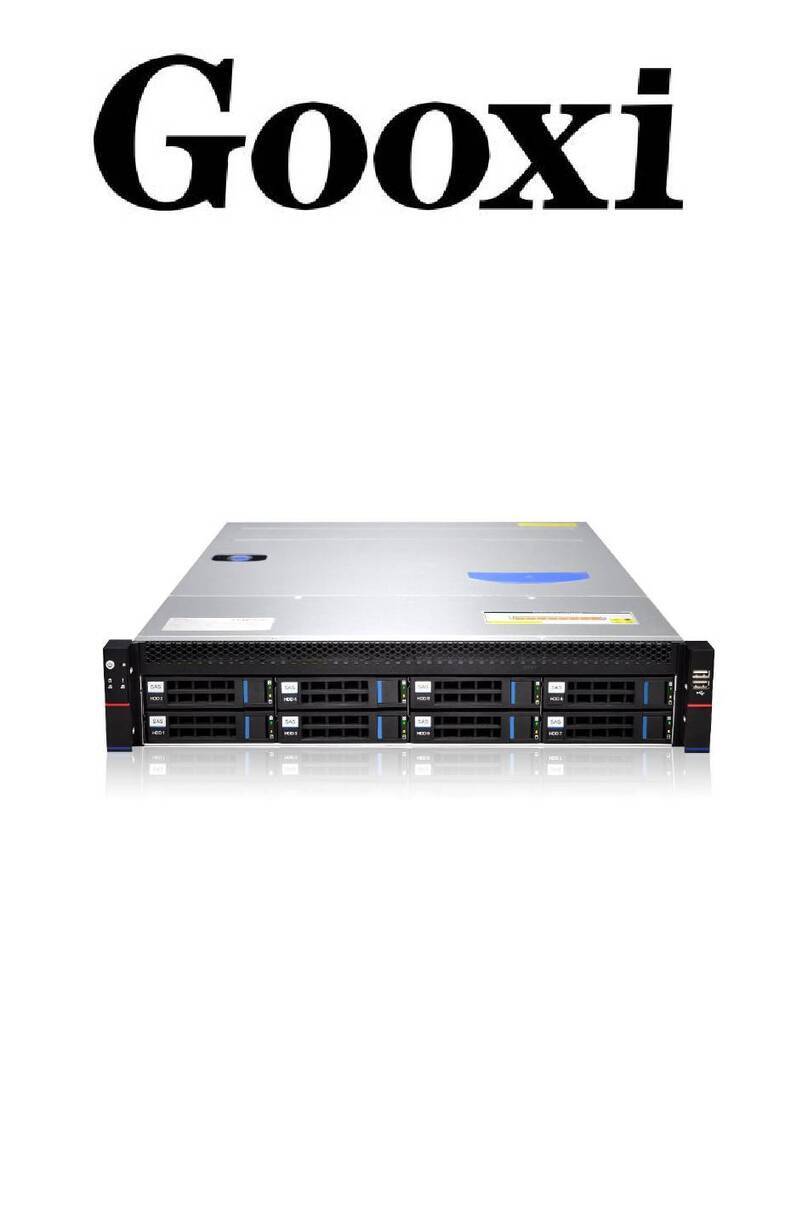
Gooxi
Gooxi RMC2108-670-HS User manual
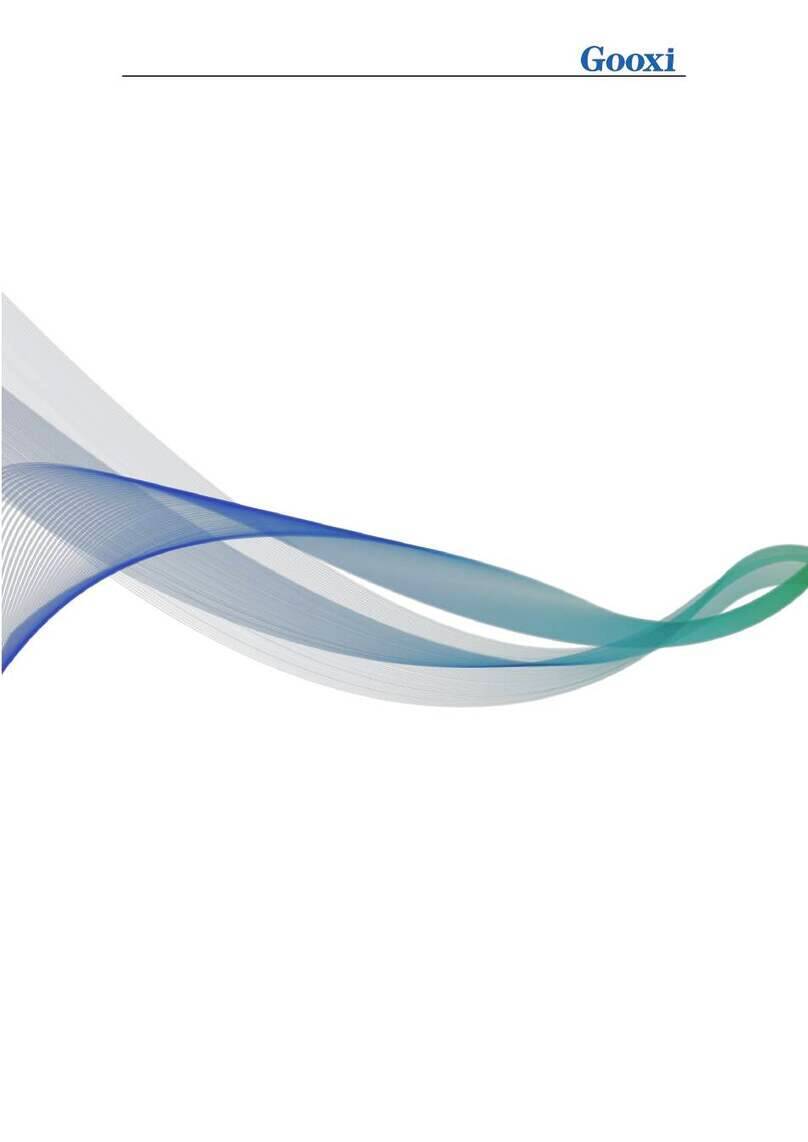
Gooxi
Gooxi SL201-G4 User manual
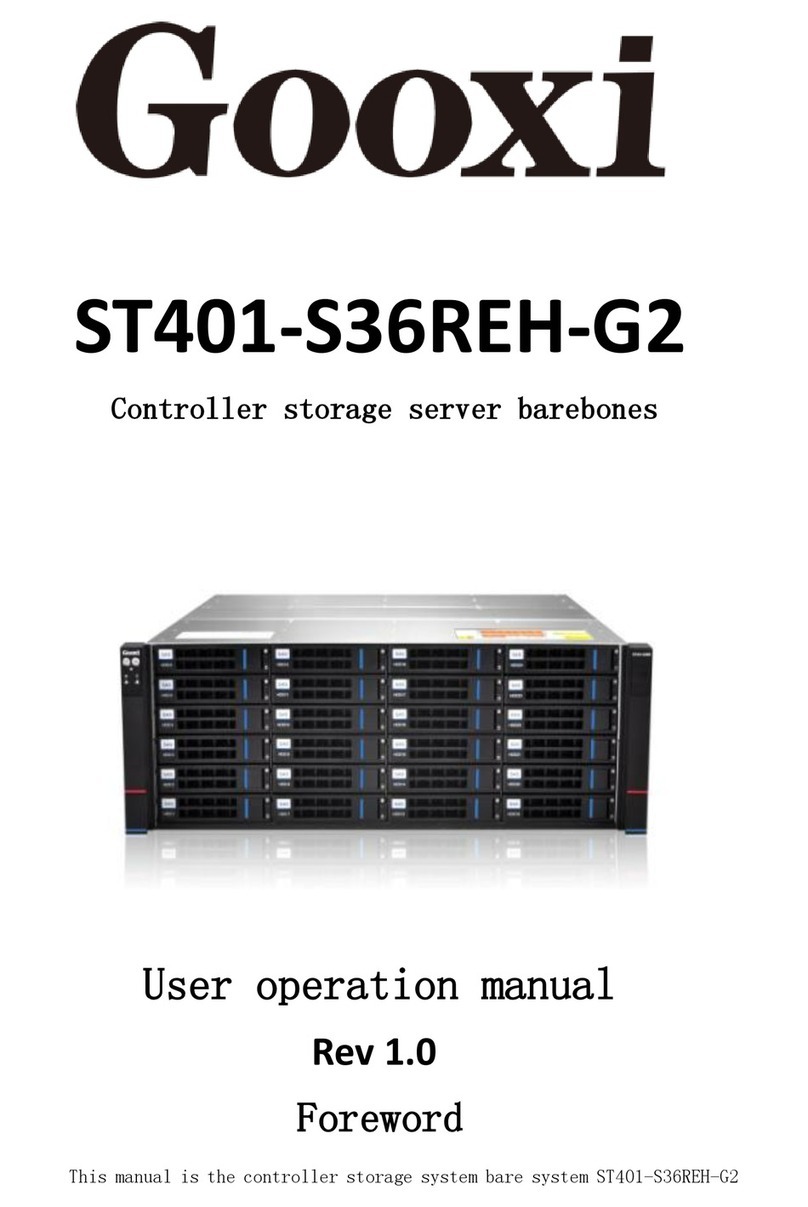
Gooxi
Gooxi ST401-S36REH-G2 Mounting instructions
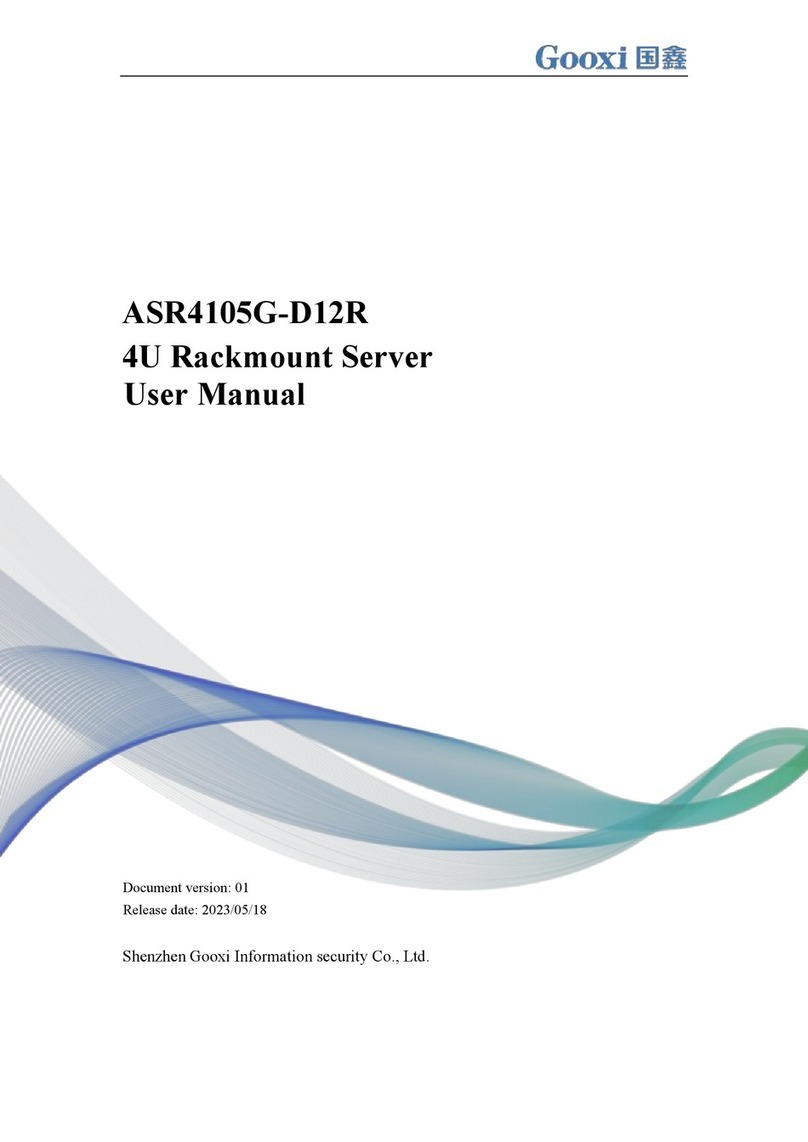
Gooxi
Gooxi ASR4105G-D12R User manual
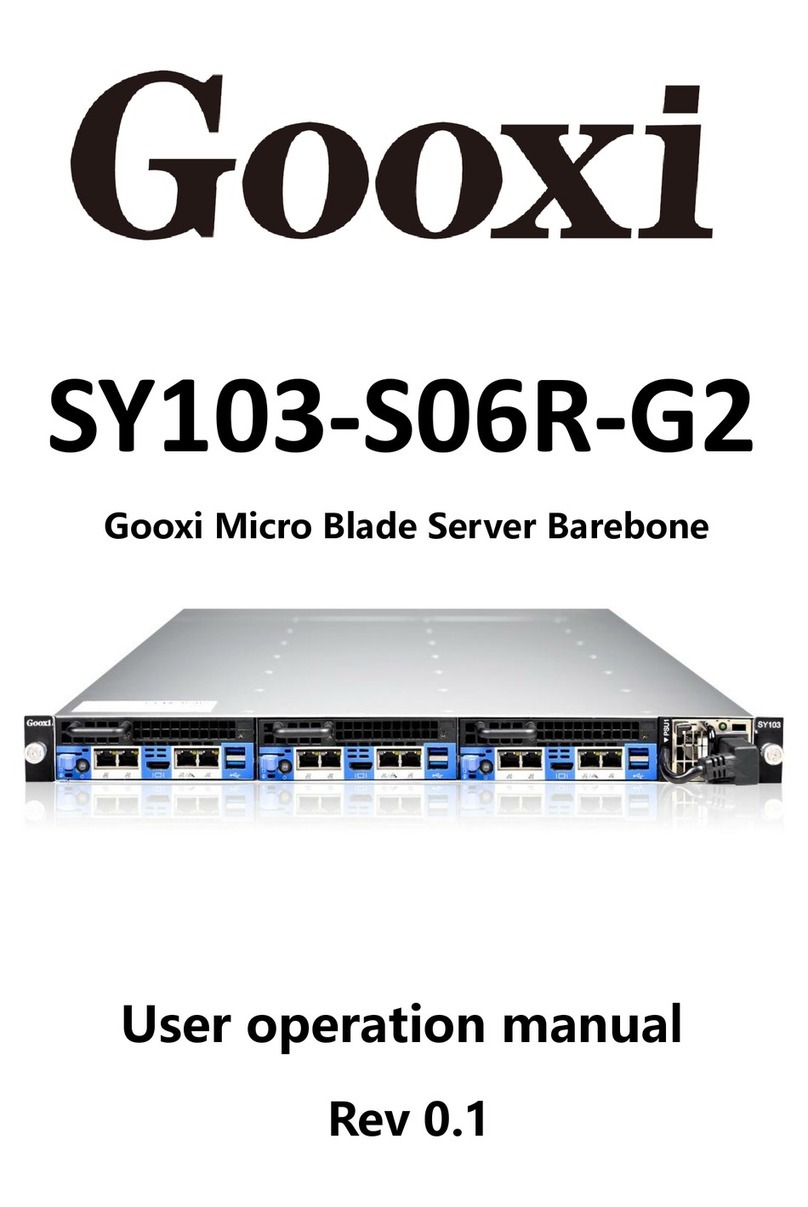
Gooxi
Gooxi SY103-S06R-G2 Mounting instructions
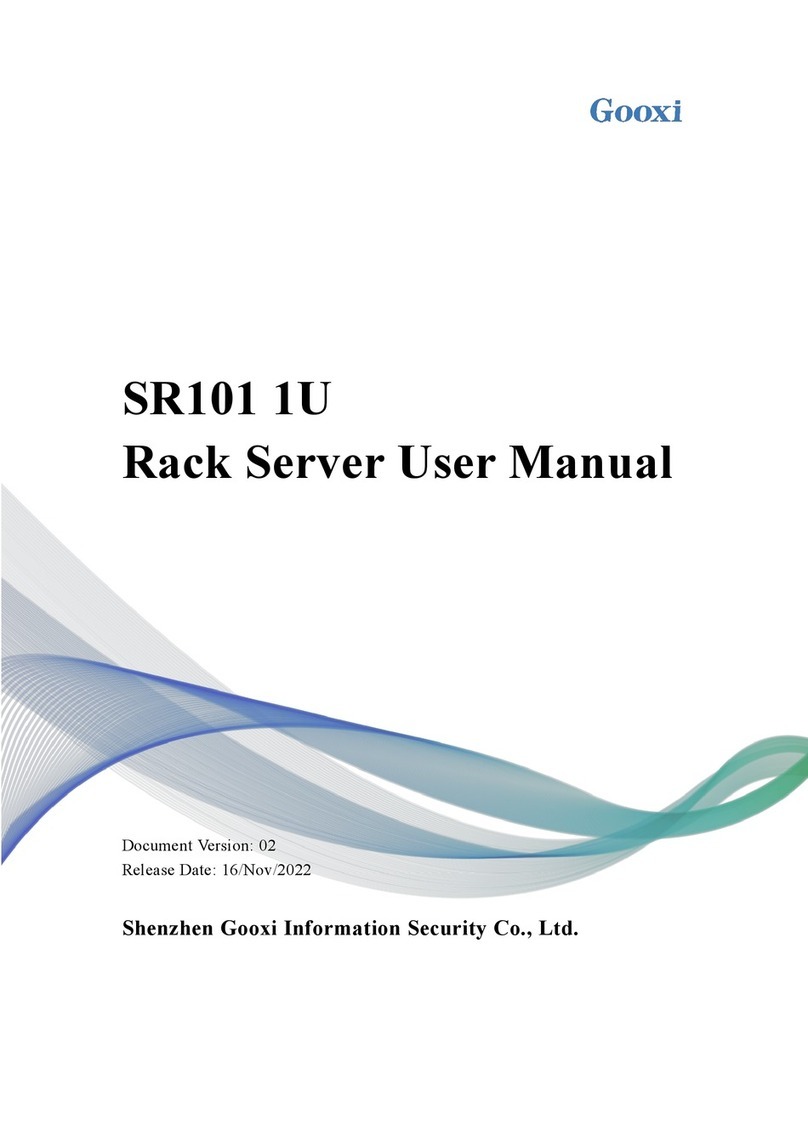
Gooxi
Gooxi SR101 1U User manual
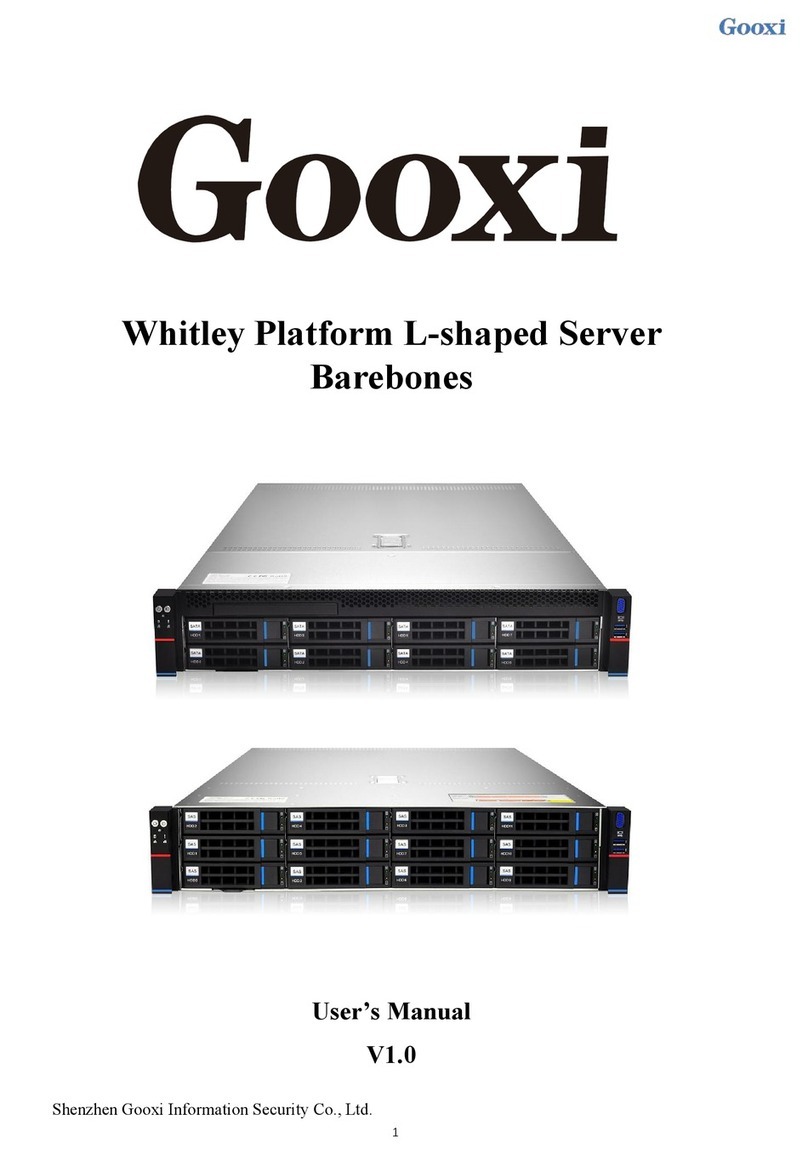
Gooxi
Gooxi SL101-D04R-G3 User manual
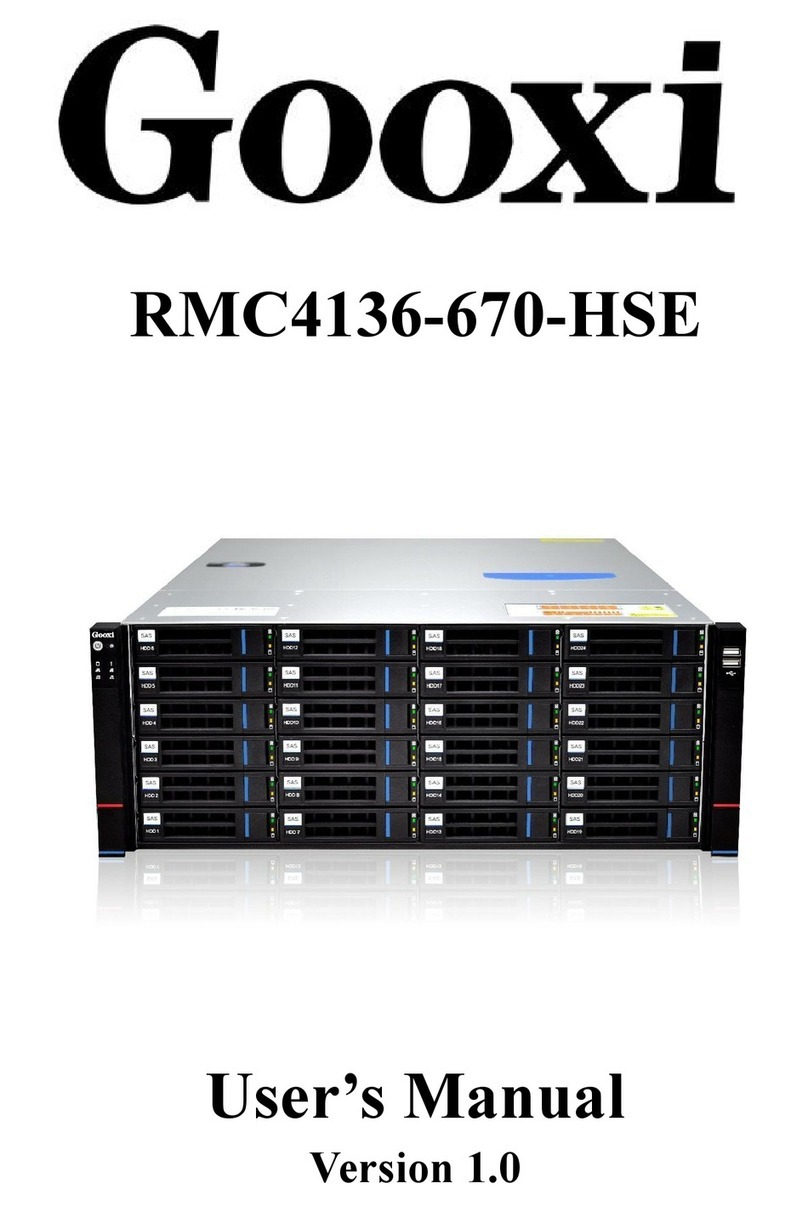
Gooxi
Gooxi RMC4136-670-HSE User manual
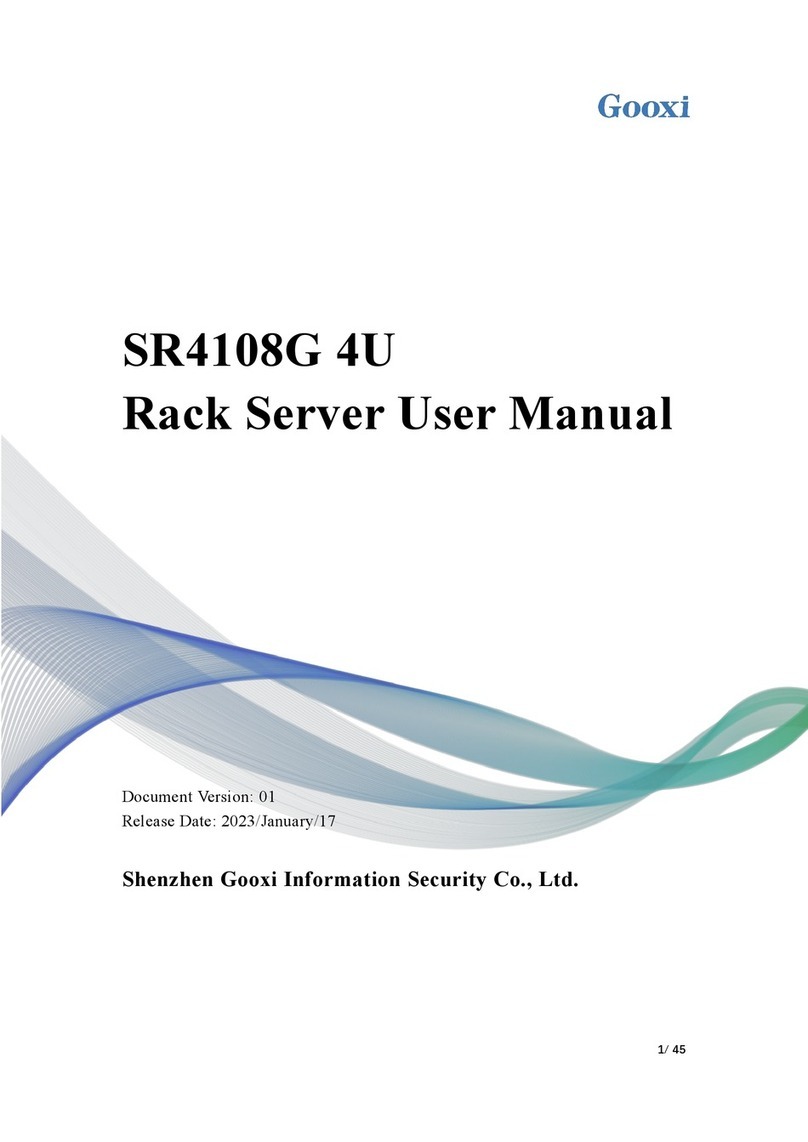
Gooxi
Gooxi SR4108G4U User manual
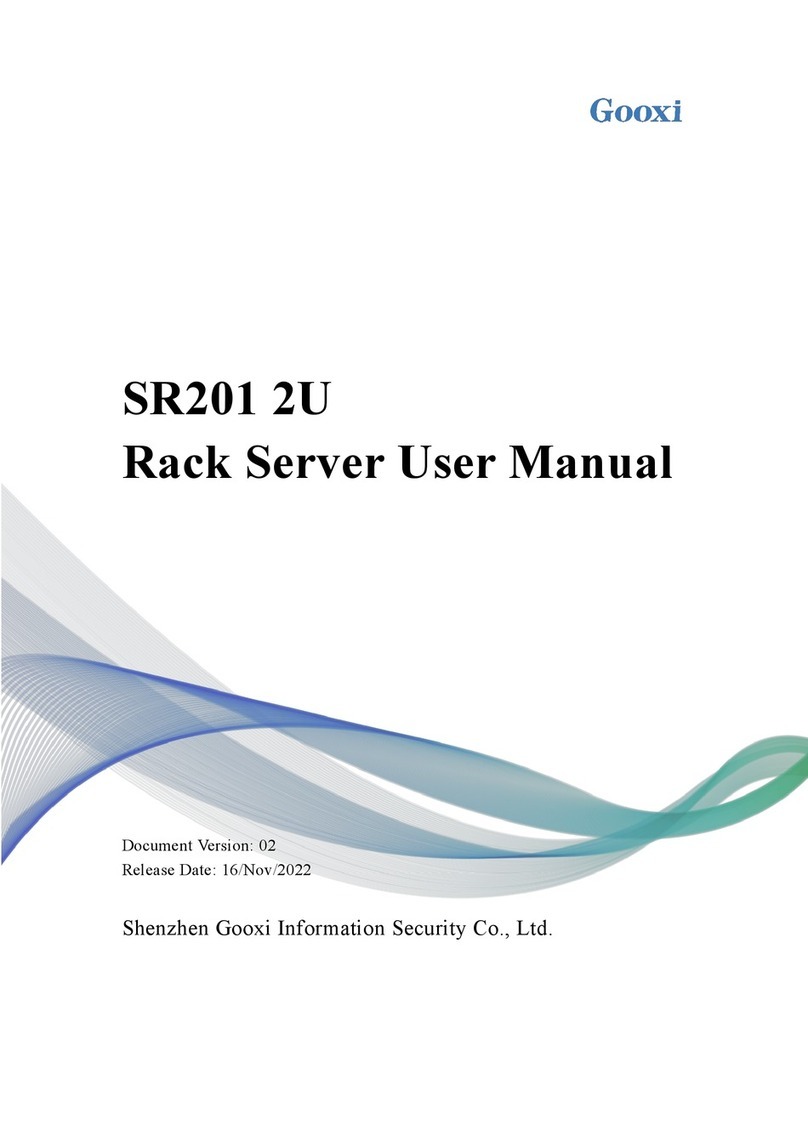
Gooxi
Gooxi SR201 2U User manual


